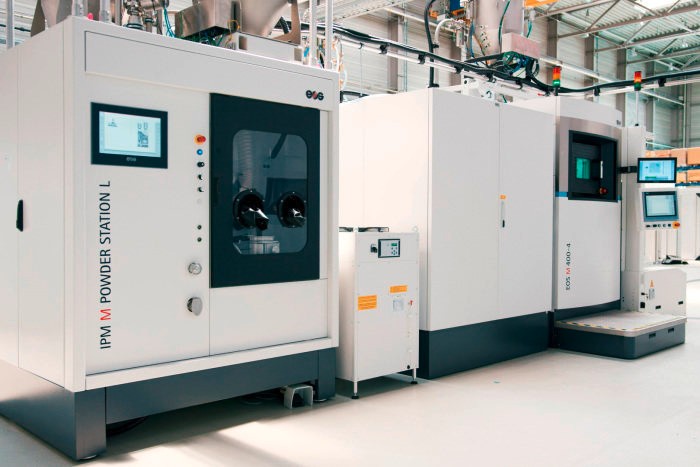In May 2017, Premium AEROTEC, Daimler, and EOS announced a collaboration to develop the basis of a system for series production using 3D printing technologies. Called the NextGenAM project, the companies have unveiled the first pilot plan that has been launched at Premium AEROTEC in Varel.
 As you may know, those 3 companies have a different background: Premium AEROTEC supplies aerostructures, Daimler is a car manufacturer and EOS provides solutions in the field of industrial 3D printing. Their common mission is therefore to develop a complete production cell capable of manufacturing aluminum components for the automotive and aerospace industries.
As you may know, those 3 companies have a different background: Premium AEROTEC supplies aerostructures, Daimler is a car manufacturer and EOS provides solutions in the field of industrial 3D printing. Their common mission is therefore to develop a complete production cell capable of manufacturing aluminum components for the automotive and aerospace industries.
Until now, the innovation might not be easily perceived. In fact, the team will implement a facility that integrates a range of systems intended for AM, post-processing and quality assurance. What will make the success of this facility is the automation process in all additive and conventional process steps. All manual steps being removed, complex, lightweight and even robust components could be simultaneously manufactured.
The contributions of stakeholders
Center of the pilot production chain is the EOS M 400-4 four-laser system for industrial 3D printing with metal materials. The system is used in combination with the peripheral solutions of the EOS Shared-Modules concept. The EOS M 400-4 in Varel is therefore equipped with a powder station and connected to a stand-alone setup and unpacking station.
As a result, filling and emptying the system with the aluminium material, setting up the system to prepare a new build job, and unpacking the built components from the powder bed can be carried out independently of and parallel to the actual AM build process. This significantly increases productivity. The additively manufactured components are transported between the individual stations fully automated and under protective gas in a container on an automated guided vehicle.
Premium AEROTEC provides serial 3D-printed structural components for Airbus aircraft. Its expertise might be useful in the qualification of aluminium in the project because titanium powder has been the only material used so far. As for Daimler, the automotive manufacturer brings its expertise in the field of mass production – a crucial aspect if the pilot plant is to be used to manufacture parts on a large scale.
For further information about 3D Printing, follow us on our social networks and subscribe to our newsletter
Would you like to subscribe to 3D Adept Mag? Would you like to be featured in the next issue of our digital magazine? Send us an email at contact@3dadept.com
//pagead2.googlesyndication.com/pagead/js/adsbygoogle.js
(adsbygoogle = window.adsbygoogle || []).push({});





